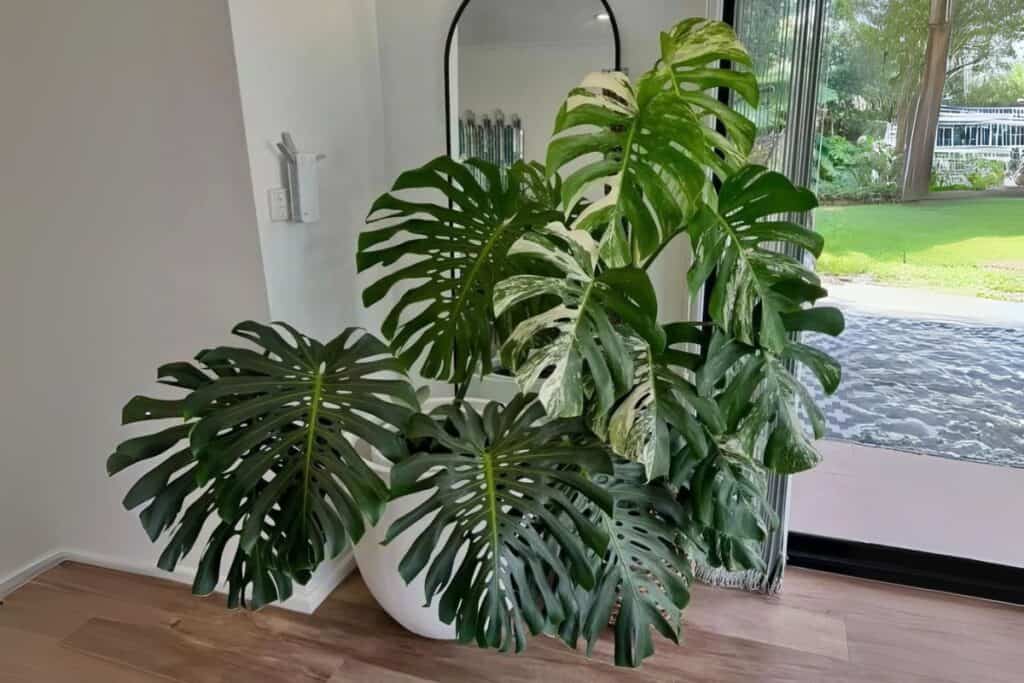Monstera plants require a precise balance of moisture to thrive, much like their native rainforest habitat. Plant expert Dr. Sarah Chen notes, “The key to successful Monstera care lies in mimicking their natural environment while avoiding common watering pitfalls.” From understanding soil moisture levels to recognizing vital warning signs, mastering the art of Monstera watering involves several critical factors that can make the difference between a struggling plant and a flourishing tropical showpiece.

Contents
Understanding Your Monstera’s Natural Water Needs
While Monstera plants have gained popularity as houseplants, understanding their natural water requirements starts with examining their tropical forest origins. Native to Central American rainforests, these plants naturally grow beneath dense tree canopies where moisture retention remains high throughout the year.
In their native habitat, Monsteras develop extensive root systems that efficiently absorb water from both soil and air. Their semi-epiphytic nature allows them to climb trees using aerial roots, which supplement water intake from regular soil roots. This adaptation explains why proper watering involves thoroughly saturating the soil while maintaining adequate humidity levels for ideal growth.

Signs Your Monstera Is Thirsty (Or Drowning)
Knowing how to spot the signs of improper watering can mean the difference between a thriving Monstera and a struggling plant.
Thirsty signs include:
- Wilting or curling leaves
- Brown, crispy leaf edges
- Dry, compacted soil pulling away from pot edges
Drowning symptoms to watch for:
- Yellow leaves that droop heavily
- Soft, mushy stems near the soil
- Fungus gnats hovering around the pot
- Root rot with black, mushy roots
Watch for these indicators and adjust watering accordingly. As botanist Dr. Sarah Chen notes, “A Monstera will clearly communicate its water needs through these visual cues.”
Perfecting Your Watering Schedule and Technique
Although a rigid watering schedule may seem convenient, the key to properly watering a Monstera lies in responding to the plant’s individual needs. The most effective watering techniques involve checking soil moisture levels by inserting a finger 2-3 inches deep into the soil before watering.
When watering is needed, thoroughly saturate the soil until water flows from drainage holes. For even moisture distribution, consider alternating between top and bottom watering methods. During active growth in spring and summer, most Monsteras need water weekly, while winter dormancy requires less frequent irrigation – typically every 2-3 weeks.
Seasonal Adjustments for Healthy Growth
Flexibility marks the essential nature of Monstera care throughout the changing seasons. During spring and summer’s active seasonal growth, these tropical plants require weekly watering to support vigorous development. As temperatures rise, monitor soil moisture closely and adjust frequency accordingly.
In contrast, fall and winter demand a different approach. With slowed growth and cooler temperatures, watering needs decrease considerably. Maintaining appropriate humidity levels becomes vital during heating season, as indoor air tends to dry out. A simple moisture meter can help gardeners track when soil truly needs hydration rather than following a rigid schedule.
Creating the Ideal Moisture Environment
The right moisture environment combines proper watering technique with ideal atmospheric conditions for Monstera plants. Ensuring proper moisture retention requires a well-draining potting mix that maintains both water and soil aeration. Experts recommend a mix containing 60% peat moss, 30% perlite, and 10% orchid bark.
To create favorable conditions:
- Maintain humidity levels between 60-80%
- Water thoroughly until drainage occurs
- Allow top 2-3 inches of soil to dry between waterings
- Use a moisture meter to monitor deeper soil levels
- Install a humidity tray filled with pebbles
- Group plants together to increase ambient moisture
